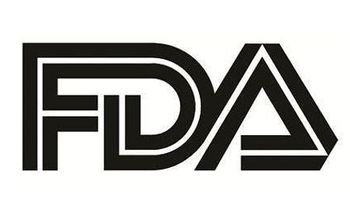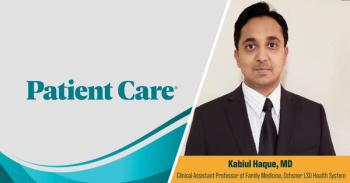
Severe Hypertension: Emergency or Not?
In patients presenting with severe hypertension, what constitutes a true emergency?
Q: In patients presenting with severe hypertension, what constitutes a true emergency?
A: Most hypertensive crises are preventable; they usually result from inadequate management of stage 1 or stage 2 hypertension or nonadherence to therapy. Each year, more than 500,000 Americans (about 1% of adults with hypertension) have a hypertensive crisis. Hypertensive crises constitute as many as 25% of all visits to busy metropolitan emergency departments (EDs), and hypertensive emergencies account for 25% to 30% of these cases.
Hypertensive crises encompass a spectrum of clinical situations that are characterized by markedly elevated blood pressure (BP) and evidence of progressive or impending target organ damage. True hypertensive emergencies require immediate hospitalization along with intravenous treatment to reduce BP (not necessarily to normal levels) and prevent or limit target organ damage.1,2 Examples of such damage include hypertensive encephalopathy, intracranial hemorrhage or acute ischemic stroke, unstable angina pectoris, acute myocardial infarction, acute left ventricular failure with pulmonary edema, dissecting aneurysm, and eclampsia.
Two thirds of patients who present with hypertensive crises have severe hypertension without evidence of progressive target organ damage. I prefer "hypertensive crisis" to the older term "hypertensive urgency," because the word "urgency" has often contributed to overly aggressive treatment in the ED, or even resulted in admission and parenteral antihypertensive therapy. Elevated BP alone does not constitute a hypertensive emergency. Rather, the degree of target organ involvement will determine the rapidity with which BP should be lowered to prevent and limit morbidity.
More Like This
Initial evaluation. Early triage of patients who present with severe hypertension is necessary to determine appropriate therapeutic strategies and limit morbidity and mortality.3 A brief but thorough history taking should address the duration and severity of hypertension, comorbid conditions, and all current medications, including prescription and nonprescription drugs and-of particular importance-the use of illicit drugs. Direct questioning of each patient regarding the level of compliance with current antihypertensive medications may indicate inadequacy of treatment or frank nonadherence. Determine whether there is a history of cardiovascular, renal, or neurological disease and check for specific manifestations, such as headaches, seizures, chest pain, dyspnea, and edema.
Measure BP in both upper and lower extremities, particularly if peripheral pulses are diminished. Assess brachial, femoral, and carotid pulses, and conduct a careful cardiovascular and neurological examination, including mental status. This brief evaluation will establish the degree of involvement of target organs and will often provide clues to the possibility of a secondary form of hypertension, such as renovascular hypertension.
Diagnostic tests. Current guidelines recommend a blood chemistry panel, urinalysis, an ECG, and careful funduscopic examination. An emergent chest radiograph may be helpful in patients who present with cardiopulmonary symptoms or those in whom an aortic dissection is suspected.
Unfortunately, there are no prospective clinical trials that have established the cost-effectiveness of routine initial laboratory studies.Nevertheless, urinalysis with microscopic examination of the urinary sediment may reveal significant proteinuria, red blood cells, and/or other cellular casts that suggest renal parenchymal disease. Electrolyte abnormalities, particularly hypokalemia or hypomagnesemia, increase the risk of cardiac arrhythmias. The chemistry panel may also provide evidence of renal and/or hepatic dysfunction. The ECG will identify evidence of coronary ischemia and/or left ventricular hypertrophy and may reveal pulse deficits that suggest aortic dissection.
When the initial clinical examination suggests cerebral vascular ischemia or hemorrhage, or when the patient is comatose, a CT scan should be ordered immediately. The presence of cardiovascular symptoms will determine whether a chest radiograph is needed.
Unfortunately, most patients in the ED do not undergo all of the screening tests recommended by current guidelines for appropriate initial assessment (Table). These omissions could well affect early assessment decisions and treatment.4,5 Although studies designed to provide an evidence-based approach to the evaluation of hypertensive crises are needed, such studies are not feasible because patients who present with acute, severe hypertension have diverse causes for their condition and require different levels of treatment.
Table – ED evaluation of patients with severe hypertension
Management of hypertensive emergency. A patient who is deemed to have a true hypertensive emergency is admitted promptly to an ICU for continuous monitoring of BP. He or she should receive any one of a number of parenteral antihypertensive agents in an effort to reduce BP promptly. Appropriate treatment results in a reduction of BP of 10% to 15% in the first hour and up to 25% in the first several hours. In many cases, the cause of the hypertension may not have been clarified before the initiation of therapy. Once BP has been stabilized, further diagnostic studies can be initiated. After BP has been controlled with parenteral agents, oral therapy is initiated for long-term control.
Management of severe hypertension. Elevated BP alone rarely requires emergency therapy, and no clinical evidence suggests that patients who present with severe hypertension, many of whom are asymptomatic, are at increased risk if BP is not normalized during their ED visit. Hypertension has probably been diagnosed in most of these patients, and it is likely that they are currently untreated, inadequately treated, or nonadherent to therapy. After a brief period of observation in the ED, oral antihypertensive treatment can be initiated or resumed; if previous treatment was inadequate, dosages can be adjusted.
Clinically stable patients may be safely sent home with oral medications if arrangements are made for follow-up within 24 hours to several days in the outpatient setting. Discharge of a patient without a confirmed follow-up appointment represents a missed opportunity to get that patient back into treatment for optimal BP control.
References:
REFERENCES:
1.
Elliott WJ. Management of hypertension emergencies.
Curr Hypertens Rep.
2003;5:486-492.
2.
Vidt DG. Hypertensive crises: emergencies and urgencies.
J Clin Hypertens.
2004;6:520-525.
3.
Elliott WJ. Clinical features in the management of selected hypertensive emergencies.
Prog Cardiovasc Dis.
2006;48:316-325.
4.
Bender SR, Fong MW, Heitz S, et al. Characteristics and management of patients presenting to the emergency department with hypertensive urgency.
J Clin Hypertens.
2006;8:12-18.
5.
Karras DJ, Kruus LK, Clenki JJ, et al. Evaluation and treatment of patients with severely elevated blood pressure in academic emergency departments: a multicenter study.
Ann Emerg Med.
2006;47:230-236.
Newsletter
Enhance your clinical practice with the Patient Care newsletter, offering the latest evidence-based guidelines, diagnostic insights, and treatment strategies for primary care physicians.


























































































































































































































































































